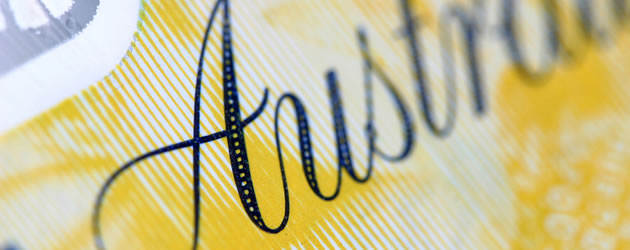The Euro to Australian Dollar (EUR/AUD) exchange rate is fluctuating around the week’s opening levels, influenced by global markets after European and Australian traders rested for Easter weekend.
Euro and Australian Dollar Both Weak with Uninspired Pair Movement
A lack of key data from either region since last week’s disappointing German consumer confidence result has seen the EUR/AUD pair trending narrowly since last Thursday.
While the pair reached 1.4919 on Thursday morning, it settled into around 1.4873 shortly after for Easter weekend and has continued to trend quite closely since markets reopened.
While Eurozone and Australian investors observed Easter bank holidays on Friday and Monday, quiet movements from other markets around the world caused more noticeable fluctuations – none of which were able to move EUR/AUD too far from this spot. The pair currently trades at about 1.4900, around 0.5% up from this morning’s levels.
Attempts by the European Central Bank (ECB) to weaken the common currency seem to be working somewhat as the usually safe Euro has become more easily influenced by global currency cross flows. The Australian Dollar on the other hand could be experiencing weakness from its recent rally drawing to an end.
The ‘Aussie’ spent the past month enjoying a bullish run against its rivals as high risk sentiment and preferable commodity prices (iron ore prices soaring while oil and milk plummeted) left AUD as a favourable currency among high-risk traders. Hawkish attitudes from analysts and policymakers who claimed the Australian economy would continue to grow are likely have contributed.
Unclear Risk-Sentiment Leaves Dovish Fed Investors on Hold
Unfortunately for the Australian Dollar, its luck seemed to have ended last week as risk sentiment reached an ‘off’ consensus. Many Federal Reserve policymakers took a positive stance towards the future of interest rate hikes last week, surprising investors who had seen the Fed’s March announcement as dovish.
While the US released disappointing personal consumption expenditure data yesterday, prompting some to believe that hopes of an April rate hike may have been prematurely optimistic, markets being closed around much of the world prevented any kneejerk investor reaction from being too large.
While the print influenced strength in ‘Greenback’s’ rival, Sterling, it is still unclear to many investors what stance should be taken on riskier currencies. Such movement usually inspires investors to leave the ‘Buck’ in favour of risky commodity currencies like the ‘Aussie’.
However AUD movement, while showing improvement in some pairs, has remained weak against the Euro. This is thought to be due to investors awaiting today’s speech from Fed Chairwoman Janet Yellen before they make any large scale movements on risk.
Investors may also unclear on what position should be held on the Australian Dollar after predictions from BT Investment Management (BTIM) that the currency has become overvalued and the Reserve Bank of Australia (RBA) could be forced to make a rate cut sometime soon.
Euro to Australian Dollar (EUR/AUD) Exchange Rate Forecast: Federal Reserve Likely to Cause Waves
In what could be a key afternoon for global markets, Yellen’s speech to the Economic Club of New York this afternoon has become even more highly anticipated by analysts following yesterday’s disappointing growth indications.
Many analysts fear she will continue to maintain a dovish attitude and cite difficulty in the global economy as obstacles for the American economy’s growth. A confirmation of investor fears is likely to send risk-sentiment higher once again, and the Australian Dollar is likely to benefit from this.
However, as the BTIM predicted, the Australian Dollar’s continued rallies across the board may eventually come back to hurt it if the RBA become eager to cut interest rates to stunt its growth. The ‘Aussie’s’ recent rally could definitely be coming to an end in a number of ways.
While data releases are quiet on the Australian front, with the only key prints being February’s home sales and private sector credit, Eurozone data is set to have a slightly more eventful week.
Highly anticipated Eurozone Consumer Price Index (CPI) is due for release on Thursday and is currently predicted to be appreciating to around 0.9% with the new estimate also being released. If this proves higher or lower than expected, it could impact the Euro’s strength. German CPI is due on Wednesday with German unemployment data following on Thursday. Eurozone unemployment figures are also due on Friday.
With the ECB hoping for continued Euro weakness and the Australian Dollar’s rally possibly coming to an end, the pair may become more volatile.
The Euro to Australian Dollar (EUR/AUD) exchange rate is currently trending in the region of 1.4900 while the Australian Dollar to Euro (AUD/EUR) exchange rate trends in the region of 0.6708.



